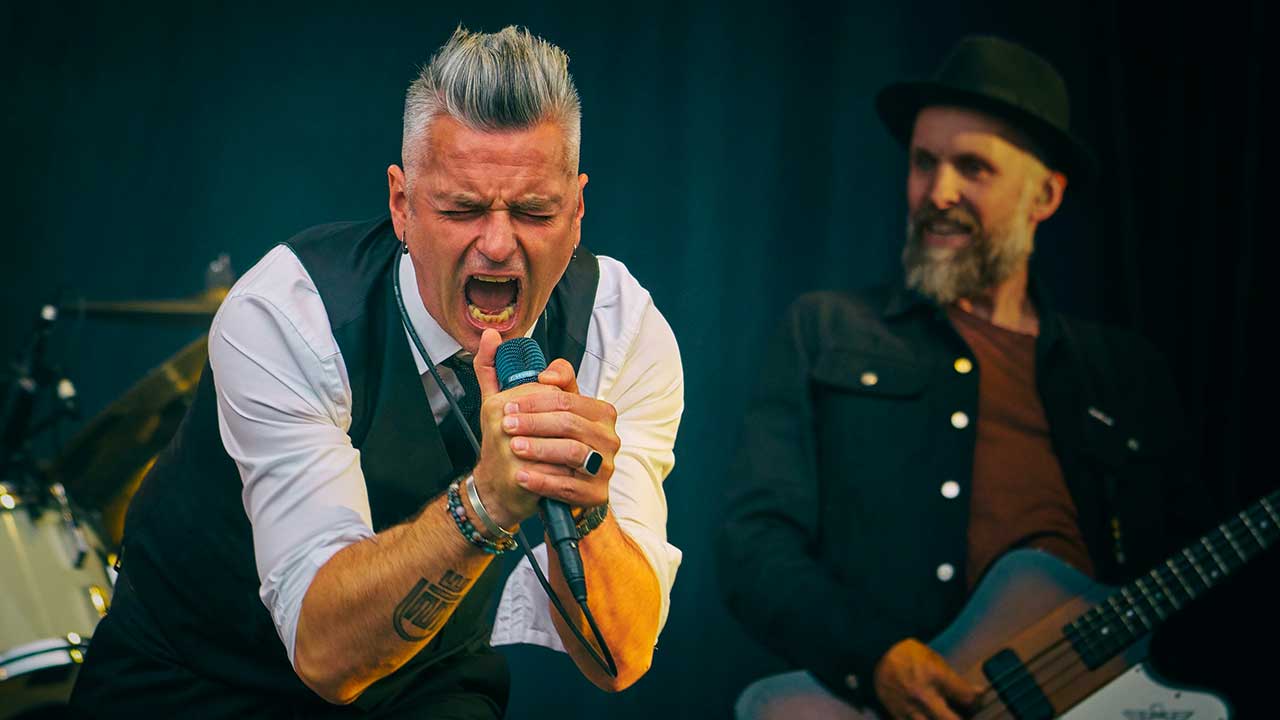HOW TO SING HIGH NOTES WITHOUT STRAINING
Men are most comfortable singing in their low voice and yet it seems like all we want to do is sing high notes.
Since we spend our lives speaking only in our low voice, we face a lot of challenges singing higher without a lot of vocal strain.
Before I share the three steps for singing higher without straining, let’s look at where vocal strain comes from.
The Most Common Sources of Vocal Strain When Singing High Notes
These are what I find to be the most common sources of vocal strain, especially for high notes:
- Faulty breathing technique.
- Excess constriction of the false vocal folds.
- Excess strain in the tongue.
- Excess strain in the jaw.
If you can find a way to even temporarily improve your breathing technique (step 1) and calm the excess strain in the false folds, tongue and jaw (step 2), you’ll be able to more effectively train your entire voice, especially the high notes.
Okay, let’s get to the three steps!
Faulty singing is caused by awkward respiration. In fact, all bad habits of the throat are merely efforts of protection against clumsy management of the breath. The foundation of all vocal study lies in the control of the breath.– Giovanni Battista Lamperti
The Techniques of Bel Canto
STEP 1: Train in the Yoga Squat Position to Temporarily Improve Breath Management
We often think that straining for high notes happens where we feel the strain. This isn’t always the case.
Faulty breathing technique causes most of our vocal problems so you want to start here when trying to fix them.
If you sit in the tradition yoga squat position show below (you don’t have to press your hands together) you will immediately notice that your breathing gets easier.

Find something low to the ground to sit on to take the pressure off your knees and you can train in this position for a long time.
I like to use two yoga blocks (shown in the above video).
This position allows you to train as if you are already much better at breathing than you currently are.
You can better do the types of exercises I describe in step 2.
STEP 2: Train Your High Notes with Semi-Occluded Vocal Exercises (SOVT)
Semi-occluded vocal exercises are those done with your mouth partially or fully closed.
Nearly all of my training to sing high notes without straining is done with these exercises, especially straw phonation in water, the very best daily vocal exercise you can do for all of your training.
Here’s a quick list of the best semi-occluded exercises:
- Straw-phonation in water
- Humming
- Lip Trill
- Tongue Trill
- Voiced Fricatives
- The Coperta
Consonants and vowels trigger much of our vocal strain. By holding the tongue, jaw and lips steady, we eliminate much of our strain and can better train high notes with SOVT exercises.
We are also training all of our vowels and consonants at the same time, by not moving them.
I explain this in more detail in an article about SOVT exercises.
STEP 3: Seek a High and Forward Placement
Vocal placement is part of your feedback system.
You take action with breathing, phonation and the way you shape your resonation chamber, and then you learn to feel the feedback from what you’ve done with all of your senses.
If you are straining when singing high notes you will likely feel the placement fall down into the mouth and throat.
When your technique is clean for your high notes, such as when you are using the above two steps, you will feel your voice placed high and forward.
There can be a few different places where you might feel vibratory and other sensation in that region. I’d suggest working to keep it a little bit above the nose, such as between the eyes or even at the center of the forehead.
I actually sometimes feel as if the sound is placed a few inches in front of my forehead.
Super high notes will climb even higher, and you may feel them under the skull or toward the crown of the head.
There is no correct answer. We’re all shaped differently and you may feel things differently than I do. Experimentation and repetition in is the key.
What to do Next
Give these ideas a try during your in-home training.
If you need vocal scales for your training I give away the largest collection of free vocal scales in the world for mp3 download. Go get them.
I do multiple training sessions per day anywhere from 15 minutes to 45 minutes. I share my current vocal training workout in a recent post.
Please share your thoughts in the comments below. Leave any questions you have, too. I’ll be posting more articles and demonstration videos soon, too.
I hope these tips can help you guys sing high notes without straining.
Be well and enjoy your day,


